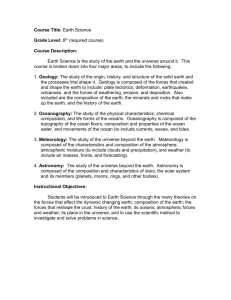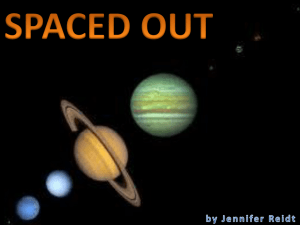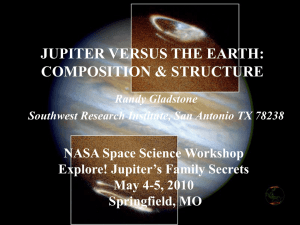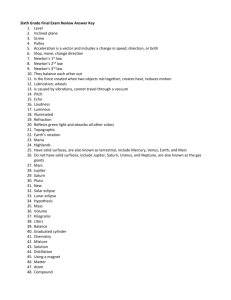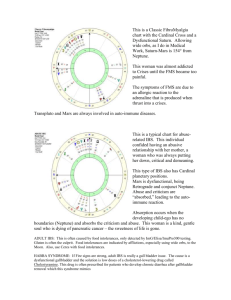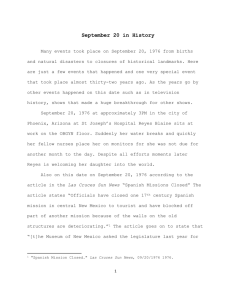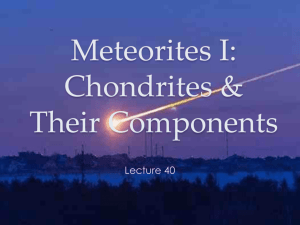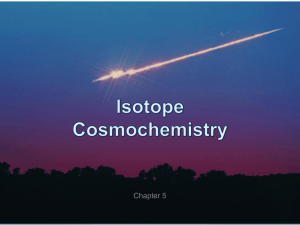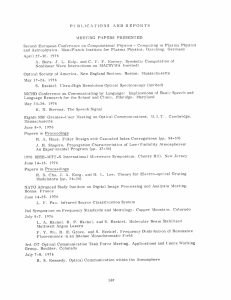Name - MIT
advertisement
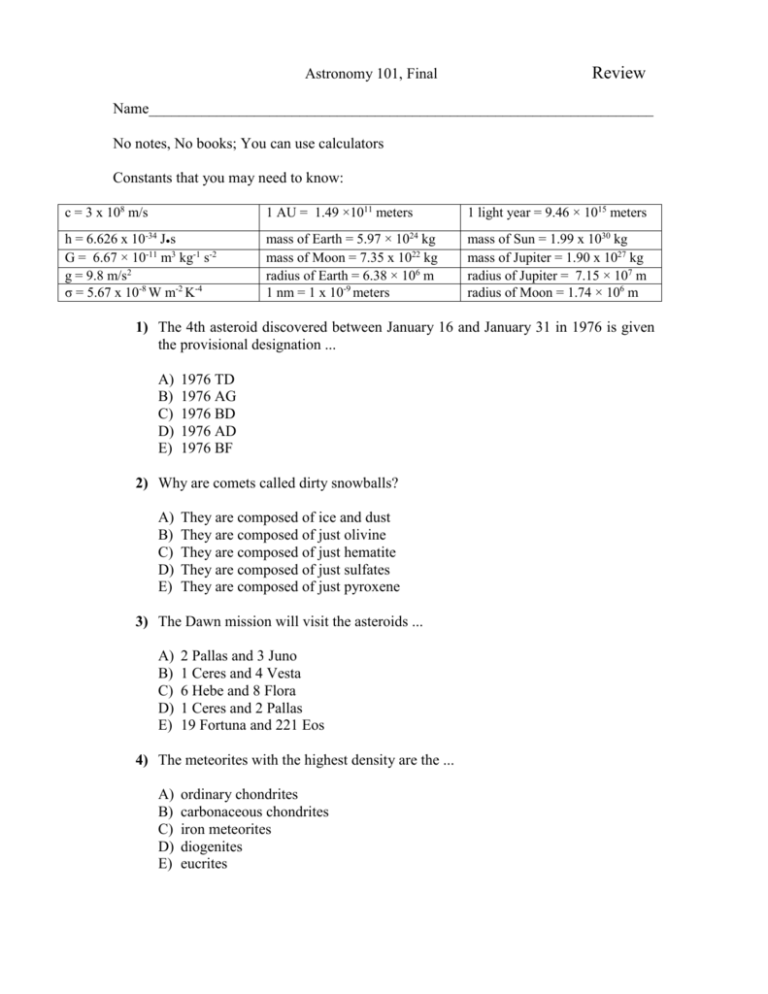
Astronomy 101, Final Review Name___________________________________________________________________ No notes, No books; You can use calculators Constants that you may need to know: c = 3 x 108 m/s 1 AU = 1.49 ×1011 meters 1 light year = 9.46 × 1015 meters h = 6.626 x 10-34 J●s G = 6.67 × 10-11 m3 kg-1 s-2 g = 9.8 m/s2 σ = 5.67 x 10-8 W m-2 K-4 mass of Earth = 5.97 × 1024 kg mass of Moon = 7.35 x 1022 kg radius of Earth = 6.38 × 106 m 1 nm = 1 x 10-9 meters mass of Sun = 1.99 x 1030 kg mass of Jupiter = 1.90 x 1027 kg radius of Jupiter = 7.15 × 107 m radius of Moon = 1.74 × 106 m 1) The 4th asteroid discovered between January 16 and January 31 in 1976 is given the provisional designation ... A) B) C) D) E) 1976 TD 1976 AG 1976 BD 1976 AD 1976 BF 2) Why are comets called dirty snowballs? A) B) C) D) E) They are composed of ice and dust They are composed of just olivine They are composed of just hematite They are composed of just sulfates They are composed of just pyroxene 3) The Dawn mission will visit the asteroids ... A) B) C) D) E) 2 Pallas and 3 Juno 1 Ceres and 4 Vesta 6 Hebe and 8 Flora 1 Ceres and 2 Pallas 19 Fortuna and 221 Eos 4) The meteorites with the highest density are the ... A) B) C) D) E) ordinary chondrites carbonaceous chondrites iron meteorites diogenites eucrites Astronomy 101, Final Review 5) ALH 87013 was found on what continent? A) B) C) D) E) Asia Africa Antarctica Australia North America 6) The Drake equation is a simple way of trying to calculate … A) The age of the universe B) The dimensions of the universe C) The number of civilizations that are capable of interstellar communication that are currently existing in our galaxy D) how much longer life will exist on Earth E) The probability a supernova will explode near Earth and cause life to become extinct 7) What is SETI short for? A) B) C) D) E) supernovas that explode at specific time intervals search for extraterrestrial intelligence search for the equation that predicts the universe’s increase in diameter stars emit light in the infrared seasonal expansion in the thermal infrared 8) Fermi’s Paradox can be rephrased as … A) if Supernovas occurs frequently and some supernovas occur nearby, why hasn’t life on Earth been destroyed? B) why have we not observed alien civilizations even though simple arguments would suggest that some of these civilizations ought to have spread throughout the galaxy by now? C) why hasn’t life evolved on Mars if it has evolved on Earth? D) why does a spiral galaxy's rotation speed depend on its mass? E) how can the night sky be dark if the universe is infinite and full of stars? Astronomy 101, Final 9) Which of the following asteroids has the most kinetic energy? A) A 1,000 kg mass moving at 10 km/s. B) A 2,000 kg mass moving at 20 km/s. C) A 1,000 kg mass moving at 5 km/s. D) A 2,000 kg mass moving at 10 km/s. E) A 3,000 kg mass moving at 10 km/s. 10) Most meteorites are approximately how old? A) 1.7 billion years old B) 13.7 billion years old C) 4.6 billion years old D) 24.2 billion years old E) 3.4 million years old 11) The Huygens probe landed on what body? A) B) C) D) E) Titan Saturn Europa Neptune Mercury 12) Where was the Great Dark Spot located? A) B) C) D) E) Neptune Saturn Jupiter Pluto Mars. 13) Which body did Voyager 2 not visit? A) B) C) D) E) Saturn Jupiter Pluto Uranus Neptune Review Astronomy 101, Final 14) Uranus is composed predominately of … A) B) C) D) E) Oxygen and Nitrogen Hydrogen and Helium Carbon and Oxygen Fluorine and Methane Oxygen and Helium Review
